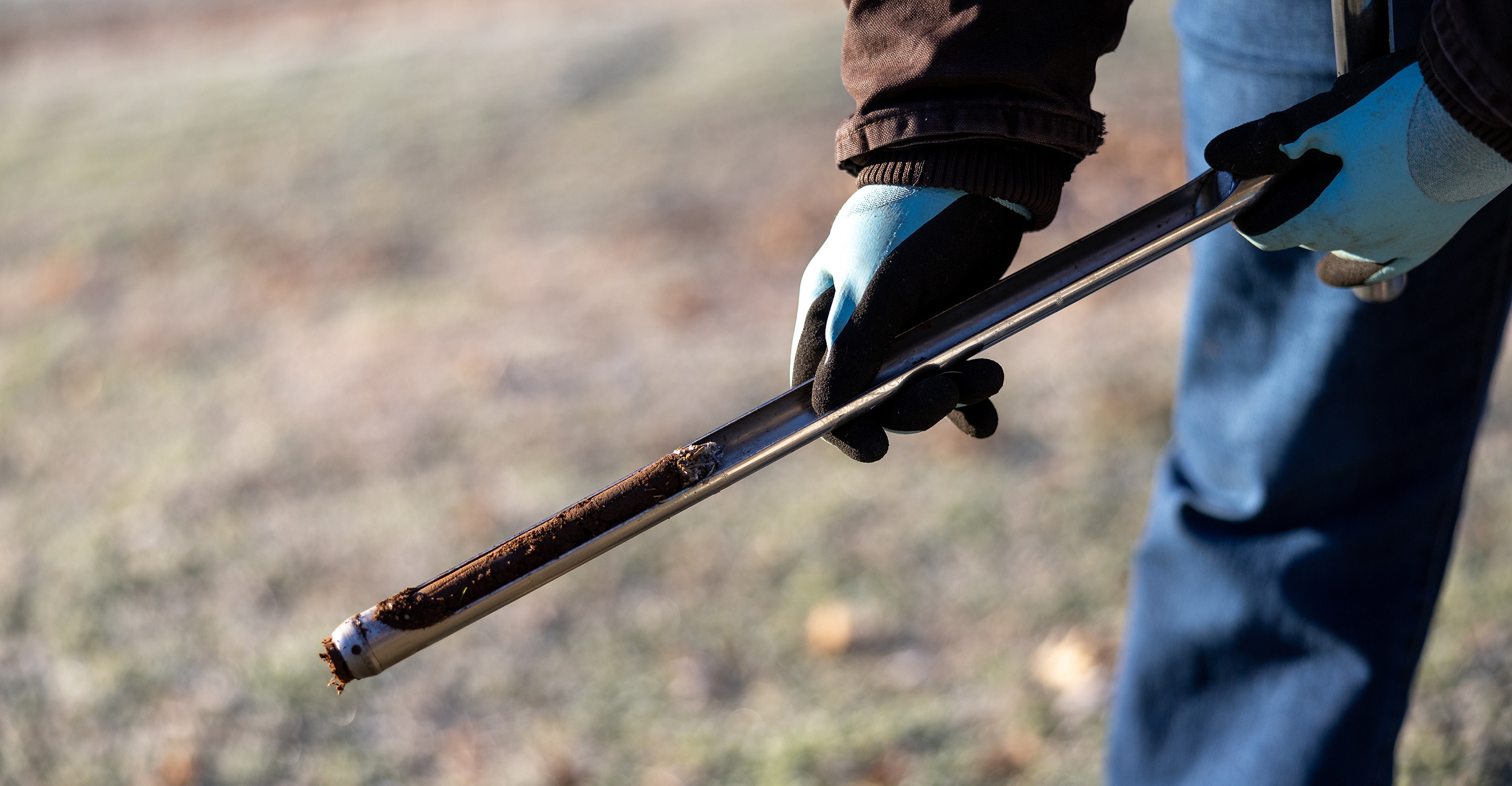
Conduct soil test now ahead of spring planting
Wednesday, January 31, 2024
Media Contact: Trisha Gedon | Sr. Communications Specialist | 405-744-3625 | trisha.gedon@okstate.edu
Selecting the right flowers, trees and shrubs for the landscape is important, but having quality soil to grow them in is one of the keys to successful gardening.
How does a gardener determine if the landscape has quality soil? According to Casey Hentges, Oklahoma State University Extension associate specialist and host of OSU Agriculture’s “Oklahoma Gardening,” a soil test will help homeowners answer that question.
“The best time to conduct a soil test to evaluate the nutrient status of the soil is when plants aren’t growing. Now is a good time of year as long as the soil isn’t frozen,” Hentges said. “A soil test will provide gardeners with two important pieces of information. First, it will give a baseline reading of soil nutrients to determine amendments that may need to be added to the soil. Second, it provides information used for making fertilizer recommendations that will enhance the soil to support a plant’s growth cycle.”
Not enough fertilizer in the soil limits plant productivity, but when too much is applied it’s wasteful and can pose a threat to the environment. With a soil test, gardeners are empowered to manage soil nutrients for proper plant growth while avoiding excess nutrients that can harm the environment and may be an unnecessary expense.
There are 16 essential nutrients plants need to grow, and most come from the soil. In addition, Hentges said plants need favorable soil chemical conditions as indicated by the soil or pH.
“While nutrients are important, a routine soil test will also tell you the soil’s pH,” Hentges said. “In some cases, the soil has plenty of nutrients, but if the pH is off, this can prevent the plant from taking up the nutrients. This will require the gardener to adjust their soil pH.”
To collect a good soil sample, gardeners must obtain soil samples from various locations throughout the lawn and garden areas, said David Hillock, OSU Extension consumer horticulturist.
“It’s recommended to test areas separately that are managed differently. For example, the vegetable garden may need to be tested separately from the lawn if gardeners have been managing it differently,” Hillock said. “Samples cores should be taken at a depth of 6 inches, and at least 15 to 20 cores should be taken throughout the area. Combine the soil cores in a clean bucket, and then fill a sandwich baggie with that soil to submit as a single sample. Make sure the sample is free of plant debris.”
For most lawns and gardens, only a $10 routine soil test is needed. Soil samples can be submitted to any one of the state’s 77 OSU Extension county offices.
All of the steps to properly conduct a soil test can be found in OSU Extension’s fact sheet, “Soil Testing, The Right First Step Toward Proper Care of Your Lawn.”
Soil samples may be submitted through the OSU Extension county office or sent directly to OSU Agriculture’s Soil, Water and Forage Analytical Laboratory. Pricing for various soil tests can be found online. More information on submitting a soil sample is also available online.
